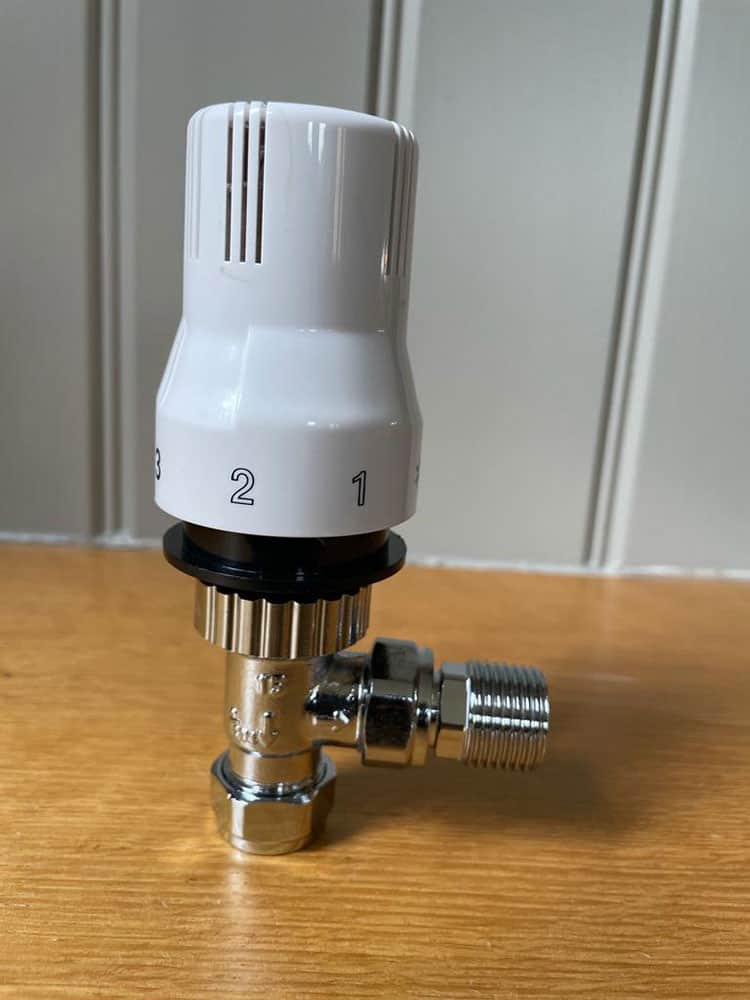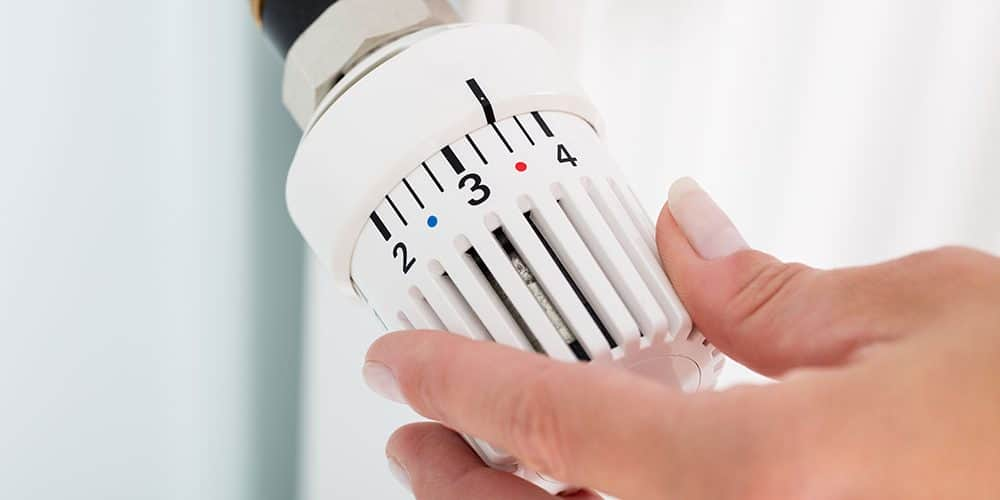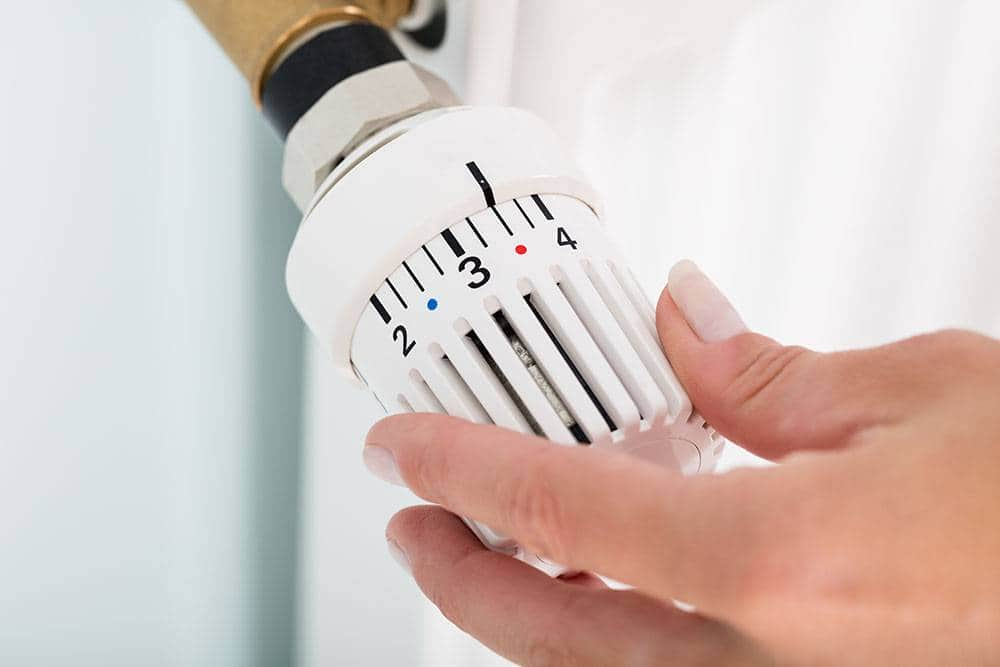
Ever wondered how to take charge of the warmth in your home like a pro? Enter the world of Thermostatic Radiator Valves (TRVs)! These nifty devices aren't just ordinary knobs; they're the secret to personalised comfort and energy efficiency in each room. Installed on radiators, TRVs perform the best in temperature control, adjusting the heat flow based on the room's vibe. But how exactly does this wizardry work, and what sets it apart from the standard radiator valves? Join us as we explore TRVs, uncovering their purpose, magic, and the key differences that make them the stars of modern heating systems.
What Is A Thermostatic Radiator Valve (TRV)?
A Thermostatic Radiator Valve is a device used in heating systems to control the temperature of individual radiators in a building. It is typically installed on the inlet or outlet of a radiator and works by regulating the flow of hot water into the radiator, thereby controlling the amount of heat emitted.
The key feature of a TRV is its ability to sense the ambient temperature of the room and adjust the flow of hot water accordingly. The valve contains a temperature-sensitive element, usually a wax or liquid-filled capsule, which expands, or contracts based on the room temperature. As the temperature rises, the element expands, causing the valve to close and reduce the flow of hot water. As the temperature drops, the element contracts, allowing more hot water to flow into the radiator and increase heat output.
By using TRVs, you can achieve better control over the heating in different rooms, helping to maintain a comfortable and energy-efficient environment. TRVs are often used in conjunction with a central heating system and can contribute to reducing energy consumption and heating costs by allowing users to tailor the heating levels in specific areas of a building.
What Is The Purpose Of A TRV
A Thermostatic Radiator Valve is your room's own temperature controller. It's there to give you the power to control how warm or cool you want each room to be in your home. Imagine having the perfect cosy spot in your living room and a slightly cooler feel in your bedroom – that's what a TRV can do for you in a central heating system. Here are the main purposes and benefits of using TRVs:
- Temperature control: TRVs allow you to set and control the desired temperature in each room. As the room temperature approaches the set level, the TRV adjusts the flow of hot water to the radiator, helping to maintain a comfortable environment.
- Energy efficiency: By providing localised control, TRVs contribute to energy efficiency. You can avoid overheating rooms that are already at a comfortable temperature, reducing overall energy consumption and heating costs.
- Zoning: TRVs zoning within a building. Different rooms or areas can be maintained at different temperatures according to individual preferences or usage patterns, optimising energy usage for specific spaces.
- Comfort: TRVs help enhance occupant comfort by allowing you to customise the temperature in their immediate surroundings. This is especially useful in larger buildings with varying heating needs in different areas.
- Flexibility: TRVs provide flexibility in heating management. They can be adjusted according to changes in occupancy, time of day, or external weather conditions to provide a responsive and adaptable heating system.
- Reduced carbon emissions: Because TRVs contribute to more precise temperature control, they can help reduce carbon emissions associated with heating. By avoiding unnecessary heating in certain areas, the overall energy consumption of the heating system is lowered.
- Compatibility with modern heating systems: TRVs are often compatible with modern central heating systems, making them a convenient and effective addition to existing setups.
How Does A TRV Work?
Imagine your radiator is like a tap for hot water. A Thermostatic Radiator Valve is the smart device that helps control how much hot water flows through the radiator. It has a little sensor, a bit like a thermometer, that can feel how warm or cool the room is. When you set the TRV to a specific temperature, the sensor works its magic. If the room is chillier than you want, the TRV opens up and lets more hot water flow through the radiator, heating up the room. If it's warm enough, the TRV reduces the flow like turning down the hot water tap. So, in simple terms, the TRV helps keep each room at the perfect temperature without wasting energy.
Let's break down how a TRV operates into steps:
- Setting the desired temperature: You, the user, sets the desired temperature on the TRV to let the TRV know what comfort level you want for the room.
- Temperature sensing: The TRV has a built-in sensor, often containing a wax or liquid-filled capsule, that can sense the current temperature of the room.
- Comparing with set temperature: The TRV compares the sensed temperature with the temperature you've set. It's like the TRV asking, "Is the room as warm or cool as the user wants?"
- Decision-making: If the room is cooler than the set temperature, the TRV opens up a valve inside, allowing more hot water to flow into the radiator.
- Adjusting water flow: The increased flow of hot water makes the radiator warmer, and consequently, the room heats up. It's like turning up the heat knob.
- Maintaining temperature: As the room temperature approaches the set level, the TRV adjusts the valve to regulate the flow of hot water. It's like finding the right balance to keep the room at a consistent and comfortable temperature.
- Closing valve: If the room becomes too warm or reaches the set temperature, the TRV closes the valve, reducing the flow of hot water. This prevents the room from getting too hot.
- Continuous monitoring: The TRV continuously monitors the room temperature and makes real-time adjustments to the valve, ensuring that the room stays close to the temperature you've set.
What Is The Difference Between A Thermostatic And Normal Radiator Valve?
Maintracts Services Director, Oliver Osmore explains the difference between a normal radiator valve and a TRV:
When we talk about the difference in radiator valves, try thinking of regular ones (the ones that are like simple on/off switches) as the standard volume control on your stereo – basic but gets the job done. A TRV, is like upgrading to a smart sound system. It not only lets you turn the heat on or off but also fine-tunes it based on the room's temperature. Imagine setting your ideal temperature, and the TRV adjusts automatically, like having a mini thermostat on each radiator. It's all about precision and tailored comfort for each room. So, while the normal valve is like a basic volume knob, the TRV offers a more personalised option”.
Key differences between TRVs and normal radiator valves are summarised below:
| TRV | Normal valve | |
|---|---|---|
| Temperature control | Provides individual temperature control for each room. Users can set desired temperatures, and the TRV adjusts the heat output accordingly. | Typically offers basic on/off functionality without the ability to fine-tune temperature settings. |
| Energy efficiency | Contributes to energy efficiency by preventing over-heating in rooms. It adjusts the heat based on the current temperature, reducing energy consumption when a room is already at the desired warmth. | Offers basic control but may not optimise energy usage as effectively as a TRV. |
| Zoning | Enables zoning in a heating system, allowing different rooms or areas to have customised temperature settings. | Usually provides uniform heating without the ability to customise temperatures for specific zones. |
| Automatic adjustment | Automatically adjusts the heat output based on changes in the room temperature, providing a responsive and hands-free operation. | Requires manual adjustment to regulate the heat, lacking the automatic functionality of a TRV. |
| Comfort and personalisation | Enhances comfort by allowing users to tailor the temperature in each room according to personal preferences. | Offers basic heating control but may not provide the same level of comfort customisation as a TRV. |
| Temperature sensing | Equipped with a temperature-sensitive element that senses the ambient temperature and makes real-time adjustments to maintain the desired temperature. | Typically lacks the temperature-sensing feature and relies on manual adjustments. |
In summary, a Thermostatic Radiator Valve offers a higher degree of control, energy efficiency, and personalised comfort compared to a normal radiator valve, making it a more advanced and adaptable choice for modern heating systems. However, it's important to note that while TRVs are effective in improving energy efficiency and comfort, proper installation and regular maintenance are essential to ensure their optimal performance. Additionally, they are typically most effective when used in conjunction with a well-balanced and correctly sized heating system.
For more information on common thermostatic radiator valve problems and how to fix them, click here.
To find out how one of our experienced heating engineers can help with radiators and towel rails in homes in and around London, contact us today.


